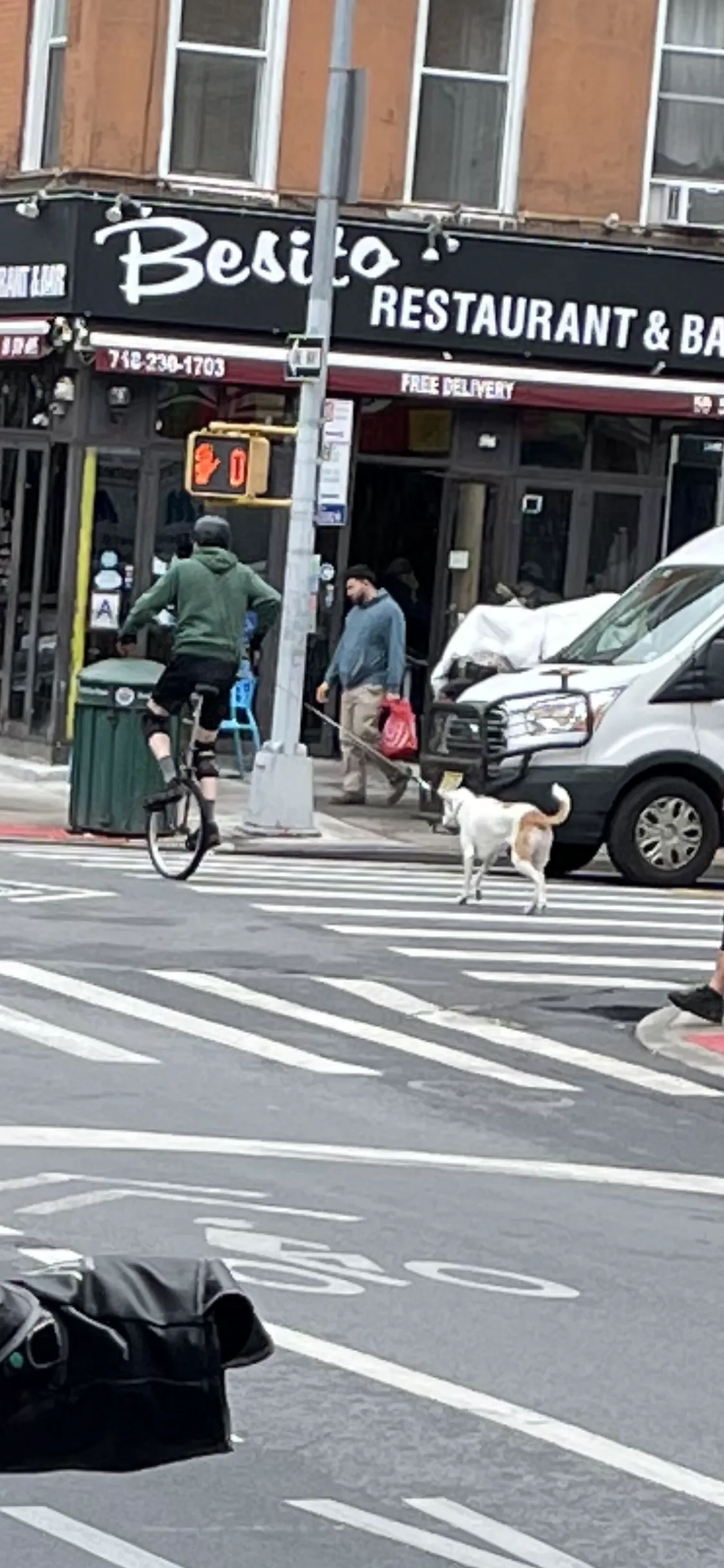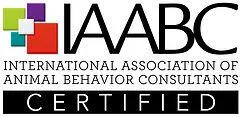

Urban Dog Training Is Different
“Most dog training resources aren't geared toward city dogs.” - Kizz Robinson
Why isn't that thing you tried working for your dog?:
A dog trainer's favorite answer to most training questions is, "It depends." It especially depends if you live in a city and you're getting advice from someone training a dog in a suburban or rural environment.

Isn't training just training, no matter where I live?
The basics of training work no matter where you are.
Classical conditioning helps your dog make good associations with things that are too exciting or worrying for them.
Marker or Clicker training is great for teaching your dog to perform skills.
Every animal needs enrichment.
Physical exercise is key for most dogs.
How you apply and access those basic elements will be different depending where you live. Let's look at how they might be different in a city than in other places.
Classical Conditioning
In Classical Conditioning, we pair something that a dog is excited or worried about with something calming. For instance, if a dog wants to chase every skateboard they see, we'd feed them tiny pieces of chicken every time a skateboard passes until they were able to stand still and watch someone skate on by without reacting.
In order for this to work, though, we need the dog to experience the trigger at a low enough intensity that they don't have a huge reaction. In the case of the skateboard-chasing dog when we started we'd need to find a way for them to see skateboards from far enough away that they would perk up and notice the board but not move toward it.
If you live in a suburb you might go to the local skatepark and sit with your dog in the parking lot many yards away from skateboards when you started. As your dog got more comfortable you could move closer to the park and not risk being ambushed by skaters and setting your work back.
Living in a city, however, you might run into skateboards at any time and with no warning. Even going out for a pee break there might be a group of skaters passing by just as your poor pup is squatting. That erodes your dog's trust in the classical conditioning game and in you.
A dog trainer with urban experience will be able to guide you through those unexpected experiences. They will figure out emergency strategies when you get ambushed and work out how to get the space you need to do the training, too. Knowing how to split training tasks into small enough chunks that both you and your dog can succeed is a valuable skill. When you find a dog trainer who can customize your approach to account for all the variables your city dog encounters, you're in for a lovely experience!
Marker or Clicker Training
You've seen all the internet famous dogs performing their very best manners in the Tractor Supply store. You've oohed and ahed over the tricks that dogs are performing in their palatial backyards. Where you live, though, the Lowe's parking lot is only as big as that palatial suburban backyard and it's already full of shoppers and workers. It's not the same experience for you or your dog as what you're seeing on social media.
We use marker training to teach dogs basic manners, tricks, and other skills. In order to learn like this your dog needs to be calm enough that they have contact with their learning brain. Dogs who are melting down and only acting on what their lizard brain is telling them won't be able to wait at the curb, sit on cue, or look at you no matter how many times you ask.
Because we need our four legged learners to be able to focus, we teach these skills in low distraction environments and then level them up to a place that has only a little more distraction than the first one. As they get better we practice their skills in slightly more distracting environments until they are champs at it no matter what is going on!
Chances are that perfect angel pup in Tractor Supply learned those skills in a quiet room in their own home. When they were crushing it in every room of the house maybe they went onto the porch and tried. Then on to the quiet backyard then the driveway out front, maybe next at a friend's house, then the Tractor Supply parking lot, and so on until the performance you saw on video.
For us city-dwellers, finding the right environments to level our dogs up into distraction at their own pace is a challenge. We might not have a yard or a driveway. Our yards are probably pretty close to someone else's yard and not very far away from a lot of street and neighbor noise. Every time we leave our homes our pup is handling vehicle traffic, foot traffic, dog traffic, and all the sights, sounds, and scents that go along with them.
Your city-savvy trainer can help you work on your training skills so that, even when you can't find the perfect environment for your practice, you can be calm and clear to give your pup the best chance of success. They're also going to use that classical conditioning we talked about above to help your dog feel calmer in general in the city so they're almost always using their learning brain.
Enrichment
I read once that, "bored dogs will find a job to do, it's probably not going to be one you want them to do."
Our dogs are smart and curious and the city isn't always dog-friendly. They need to use their brains in healthy ways, be able to make decisions about their own lives and activities, and have fun in order to feel mentally and physically well.
If a dog is terrified or overwhelmed by all the hustle and bustle on a regular walk those stress hormones may overpower the benefit of the walk. We're led to believe that if we get our dogs one good romp per day they'll be satisfied, and for some dogs that's true. In a city, though, the walk to and from a park or daycare might be so stressful that it wipes out all the good of the romp they had there.
Here's where having someone on your side who knows what the best times to walk are, what food puzzles or searching games can be done in a small apartment, how to let your dog sniff while avoiding street snacking, and a host of other neat tricks can be a lifesaver. Your urban dog trainer has probably spent their career gathering information about the kinds of enrichment that translate well to our homes, streets, and parks and they're excited to pass that information on to you!
Physical Exercise
As I said above, physical exercise can be tricky in a city. If folks have a yard, it's often not very big so dogs will have to do a lot of turning and spinning if they get up to full speed. The majority of families don't have a yard at all so their dog's physical exercise happens in public places. If their dog is worried about other dogs, worried about people, or not safe off leash, that can mean that all physical exercise happens on leash and they maybe don't get a daily full out run.
In my experience, most dogs do get plenty of physical exercise, though. Physical exercise has long been given top priority and feels like a benchmark for being a "good" dog guardian. It is important, I don't deny that. I do know a whole lot of city dogs, though, who balance their need for running around with sniffy walks, in-home playdates with a buddy, occasional hikes, flirt pole play on a long line, tricks or sports training, and all manner of other things to move their bodies.
Figuring out what will work for you and your dog, though, is likely going to be more intricate than walking to the park once a day and unclipping the leash. A trainer who is familiar with different parks, different ways to help your dog sniff and explore, and different fun training opportunities to meet your dog's needs can take a lot of trial and error out of your dog experience in a city.
Success Story
Recently I had a client whose dog was chaotic on leashed walks on the street and couldn't be left alone for fear he'd destroy things or hurt himself. She felt sure that exercise would help and felt equally sure that if she brought her dog to off leash hours in her local park she would never see him again.
We brought him to the park midday, put a 15' leash on him, and I introduced them both to some BAT 2.0 leash skills. While it didn't magically resolve all their training goals, it did make all leash walks more manageable almost immediately. The dog got to explore, choose his own direction, watch and sometimes chase some squirrels up trees, and use his brain for useful, fun things so when he got back out to the street on his regular 6' leash he wasn't so fired up that he couldn't think straight.
It's not always that easy, but with a trainer who knows your city and knows how to adjust training concepts for city dogs, it can be!
Want help customizing your training approach to account for an urban environment? Head over to the contact form on the website.
Wondering about classes? Check them out here.
FREE Ask the Trainer Zoom on Saturdays at 11a (some holidays excepted).




